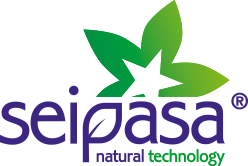A journey to the heart of Equisetum arvense and its application in agriculture

Solutions of botanical origin developed by Seipasa in its laboratory and R+D+I department.
In the words of the classical philosopher Socrates "only the knowledge that comes from inside is the true knowledge". This fundamental truth that Seipasa has been applying to the development and formulation of its agricultural bioinsecticides, biofungicides and biostimulants for 23 years, has its highest expression in Septum, a natural product with a fungicidal effect, developed by Seipasa from Equisetum arvense extract (commonly known as horsetail) used in crop protection to combat diseases such as mildew, botrytis or oidium.
The company has conducted a research project in collaboration with the Centre for Plant Biotechnology and Genomics (CBGP) of the Polytechnic University of Madrid. After three years of dedicated work the results have provided Seipasa with highly valuable conclusions regarding the action of Septum for the prevention and control of high-impact fungal diseases on grapevines, berries, fruit trees or horticultural crops.
The CBGP's involvement in this project is by no means insignificant as it is one of the major international benchmark centres in research into the functions of plants and their associated microorganisms.
"What we have obtained is extensive, in-depth knowledge of the molecular composition of all the natural active substances present in the product. This has allowed us to fully map out the 93 different active substances and their more than 20 functional groups. When working with a botanical extract it is very important to guarantee its efficacy in terms of its reproducibility in different batches.
This is only achieved by characterising each and every one of the active substances, identifying their function and ensuring that they are present in the same quantity and quality in each batch", Franciso Espinosa, Seipasa's R+D+I Manager explains.
Equisetum arvense, commonly known as horsetail, is a plant belonging to the Equisetidae family, of great botanical value in agriculture due to its natural composition. Its extract is authorised as a basic substance under European regulations, which allows its use as a fungicide to combat high-impact fungal diseases.
This journey to the heart of Equisetum arvense in agriculture, as Francisco Espinosa explains, does not end here. The research project undertaken with the CBGP of the Polytechnic University of Madrid has succeeded in producing an RNA-seq map allowing us to identify gene expression pathways enhanced in the host plant after applying the product.
"This research has given us greater insight into the preventive effects of the product before pathogens appear. The RNA-seq confirms that the product is able to strengthen and modify certain gene expression pathways in the plant that allow its induced resistance system to be stimulated so that it can defend itself against the attack of a pathogen, in this case a fungus", Francisco Espinosa highlighted.
Prevention and protection against fungal diseases
The outcome of this whole process of research, innovation and continuous improvement, applied to a product, is Septum, a compound with key Equisetum arvense extract molecules to ensure great efficacy in preventing and protecting against diseases such as mildew, oidium, botrytis or alternaria.
Based on its contents of phenols, saponins, flavonoids, and silicic acid, Septum has a preventive action that affords plant cells structural stability and mechanical resistance to combat the propagation of fungi, as well as triggering the aforementioned physiological defence responses.
The product also has a curative action, causing the breakdown and dehydration of fungal tissues. “It is no ordinary Equisetum, it is Seipasa's Equisetum arvense. All our R+D+I expertise has be placed at the service of the product, to really understand it in depth, so that we can guarantee the quality and efficacy of this solution.
The difference between our product and others on the market is very clear and this is our way of generating added value for farmers", Seipasa's R+D+I manager went on to add.
Septum is one of the finest examples of the Natural Technology model that Seipasa applies in the development and formulation of bioinsecticides, biofungicides and biostimulants for agriculture. The model is the result of comprehensive knowledge of active substances of botanical and microbiological origin, based on which the company develops its products.
This knowledge means that the company is able to identify, select and get the best from the active substance in any part of the world and in any application conditions.




